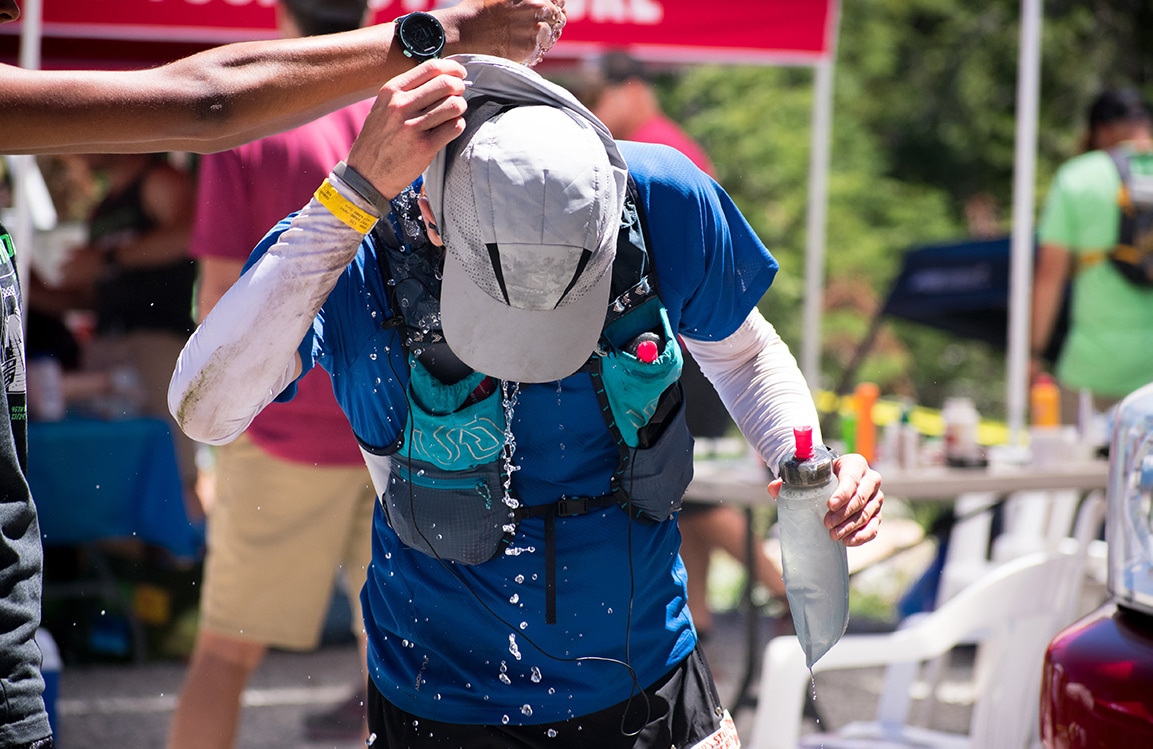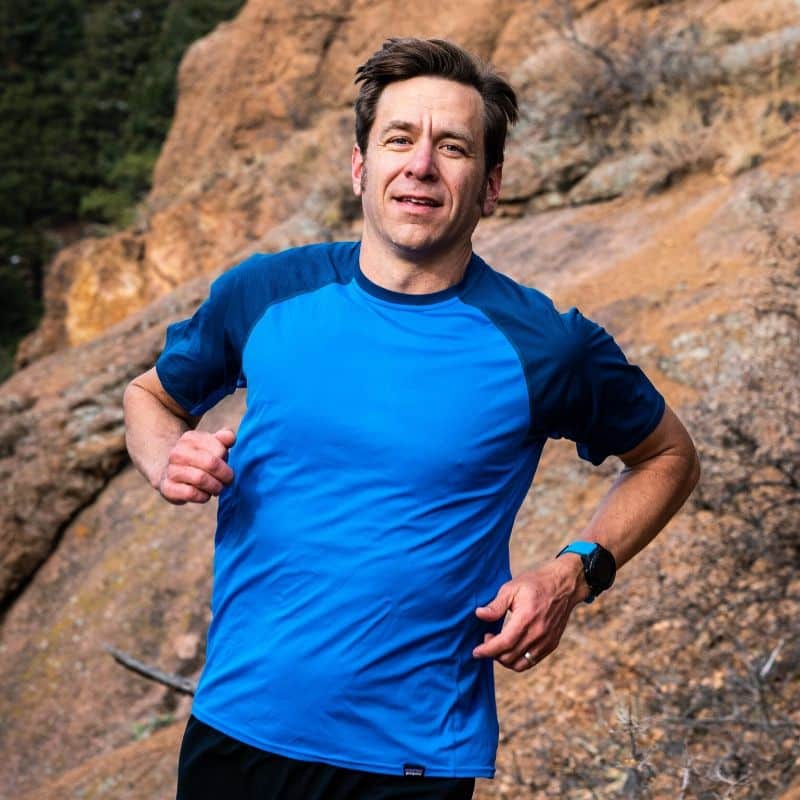
How the “Lost Season” Affected 2021 Western States Endurance Run Results
By Jason Koop,
Head Coach of CTS Ultrarunning
Throughout the history of ultrarunning, the Western States Endurance Run has served as a litmus test, or key indicator, of the state of the sport. Researchers, coaches, athletes, and fans look at the longitudinal data about finisher rates, the number of silver buckles awarded for sub-24hr finishes, the amount of time it takes runners to get through the lottery process, and the depth of elite men’s and women’s fields. The 2021 race was notable, but not for good reasons.
According to irunfar.com, the finishing rate for the 2021 Western States was 66%, which is the lowest it’s been since 2009. Similarly, only 57 runners finished in less than 24 hours to earn silver buckles, the lowest number since 2006.
So, what happened?
Don’t jump straight to the fact it was hot. It’s almost always hot at Western States and the heat this year wasn’t substantially different than it’s been in some previous years. The heat alone didn’t decimate the field, but it did expose and magnify deficiencies.
The major extenuating circumstance for Western States this year was the loss of a full season of racing due to the COVID pandemic. If the widely held theory that ultrarunners train too much and race too frequently were true, then a season without high-profile races should have resulted in a leap forward in performances and course records. And although I don’t believe over-racing or training too much are as prevalent or problematic as a lot of others believe, I did write that a year without major races was a chance for athletes to rebalance their training and shore up their weaknesses without the pressure of impending competitions. And with deferred entries already secured, they could create longer and more gradual buildups to their goal events, which in theory means you should be able to maximize fitness with less risk of injury.
But so far, that hasn’t happened. Instead, in the first high-profile, major event of the season, the field fell apart. And I’m purposely using broad terms because the drop in performance and competitiveness was pervasive throughout the categories. The only conclusion I can reach is that, despite their best efforts, athletes arrived at the race underprepared and undertrained.
Racing Really Matters
I don’t think that more runners failed to finish or took more than 24 hours to finish because they were lazy in training. Far from it. Rather, I think a season without major competitions has shown us that from a training perspective, racing really matters. Using B and C races in the process of building up to an A race creates training stimuli and learning experiences that are very difficult to replicate without toeing a start line. It’s not that runners couldn’t replicate race distances with backyard or virtual 50k, 50-mile, and 100-mile races. It’s that the stress of a major ultramarathon is greater than the sum of its parts and practicing and refining race-day routines (pacing, aid station habits, equipment choices, nutrition and hydration strategies, and competitive strategies) are big benefits of competing on a regular basis.
► Free Ultrarunning Training Assessment Quiz
Take our free 2-minute quiz to discover how effective your training is and get recommendations for how you can improve.
Enjoying This Article? Get More Free Running Training Tips
Get our coaches' best training advice, delivered straight to your inbox weekly.
The good news is that the pathway back to higher finisher rates and faster times is ahead of us with the resurgence of the ultramarathon race calendar. Ultrarunners after the pandemic are fit, but rusty when it comes to putting it all together for race day. As those routines become more automatic again, maybe we’ll see that leap forward in performance I’ve been anticipating.


Comments 6
Pingback: How to Race Ultramarathons When You are Underprepared - Jason Koop
Hey, Koop as always great article! Hope all’s going well on the PCT with Timothy Olsen.
WSER is my dream race! This weekend’s coverage by DyBo and Corinne was awesome(not to forget Billy Yang and the gang). Living in Australia we get the heat too plus high humidity, maybe not 42plus in C(~102F) but between November and late February our long runs end in the heat of the day which is fine.
As a coach as well I think racing fit simply means being racing fit, regardless of temperatures and other factors we can’t control. Not racing is definitely an issue and contributes to the actual A race being more of a guessing game without the B and C races in the legs & mind.
Again, race fit is race fit, Jim is a great example of this.
Anyway, taking nothing away from everyone’s great achievements to reach Placer High School!!
Keep them great articles coming!
Great article, Koop. Thanks, as always, for your perspective.
I entirely agreed Koop. I ran in 2017 and 2018, the heat was similar to 2021 and the cooling I saw by runners was similar. I was a pacer for a female runner this year who normally podiums in local races of all lengths, some of which are very tough races. She has tried to get into WS for six years and it was a very big deal for her. She put in the training miles, but hasn’t raced now for nearly a year and a half. When she came into Robinson, far later than expected, she didn’t complain about the heat, or volume of training miles, but did talk about lack of specific training. She ended up getting timed out. First DNF in a substantial ultrarunning career.
I look at the list of other DNFs and some notable names stand out. I seriously doubt that with their extensive experience that it was predominantly the heat that did them in.
Finally, I’d like to see numbers on what percentage of this year’s entrants went to Memorial Day Weekend Training Runs. My guess is that a much lower percentage of this year’s entrants attended the training runs, or at least all three days. COVID affected many schedules (e.g. working from home, job change, kids out of school, residence change, etc.) and financial situations. Many runners likely skipped the training weekend due to changes in schedules, finances, or just didn’t yet want to fly and get a hotel. (CA “opened” June 15th.)
My runner did not attend the training runs. In a normal year she would have gone. In fact, she and I both signed up (and therefore already paid) to attend the weekend training runs in 2020, entry which then rolled to 2021, but she decided not to attend (mistake in my opinion) due to many factors that had changed between signing up in Dec 2019 and Memorial Day weekend in May 2021. I know of others who also skipped the weekend runs that were signed up.
While not a requirement for race day success as many races likely do not have organized training run weekends prior to the race, at least one as highly attended as WSER, it seems likely that course familiarity does have a positive correlation to finishing times (or just finishing). If nothing else, it reduces the risk of missing a turn (see JW 2016).
I want also add “lack of group training runs” as a likely factor in the WSER results this year.
Many local ultrarunning or trail running groups stopped holding organized weekly runs over the last year-plus. Similar to a race, a group run provides feedback that you just don’t get running alone. While I do most of my own training alone, on those times that I do join in a group run, and the larger group breaks into smaller groups of different paces, I find myself often running faster than normal to keep up with those in one of the faster subgroups. In addition, I become more aware of my weaknesses in group runs, such as seeing how much faster many in the group can power-hike than I can. It gives me things to work on.
The runner that I was going to pace at this year’s States pointed to both lack of build-up races and group runs as large factors in her less than normal performance.
What a weekend at WSER! I am going to land in the heat camp, by talking about the elite women, and heat and how they dealt with it. I wonder what played into 17 women!! finishing in the top 35, if not heat (and patience) I know you didn’t treat this in your article… Generally it seemed like the elite women, like the men also went out fast, and some paced themselves very well, snapping up some spots in that top 35. I felt I saw footage of more vigorous cooling, packing themselves with ice than I saw on the men’s side. (thanks to all the streaming video this year) Their bodies in general have more surface area to help the cooling.
Another aside topic is how Golden ticket races are an equalizer for the international lottery developing poor opportunity for future numbers on the women side. 72 F and 244 M starters. That also would be a great future topic.
Interesting truth that there was a lack of racing leading up, but how are you proving that was the 100% causation? I will concede that I live in California and we are aware of increased fires, due to dry nights and higher nighttime temps. Perhaps that affects human performance also. Thanks for listening.